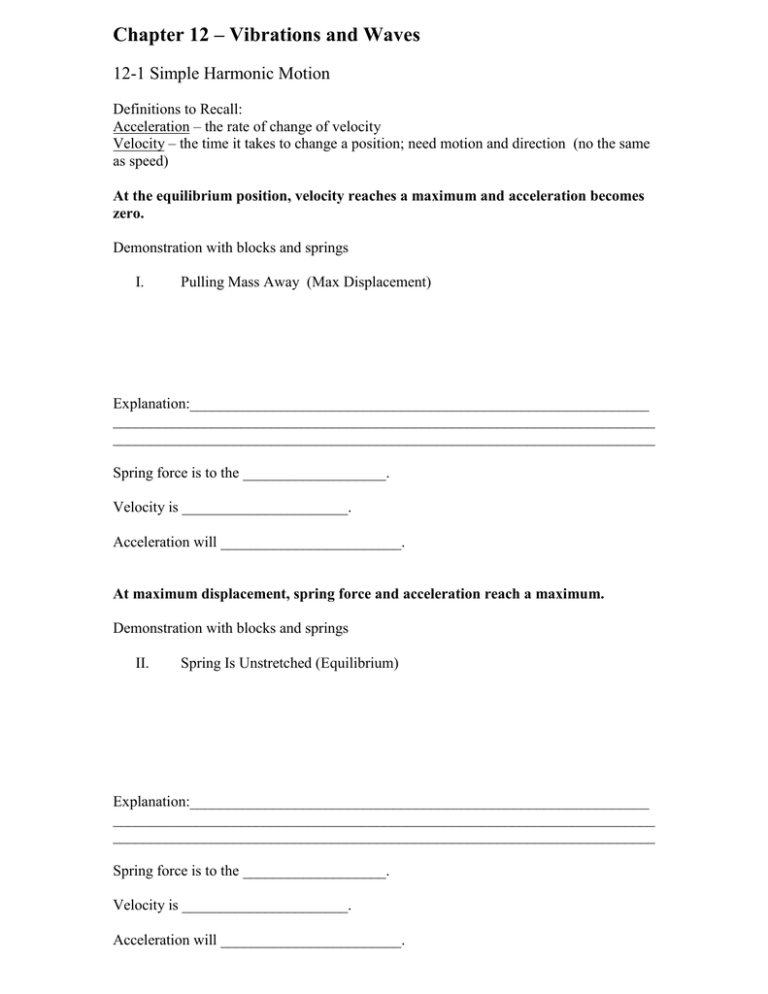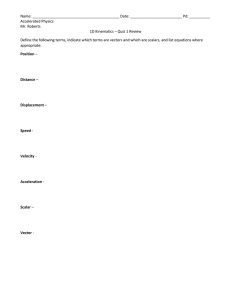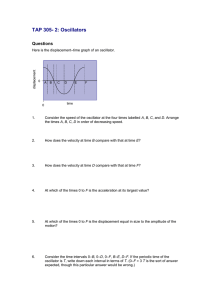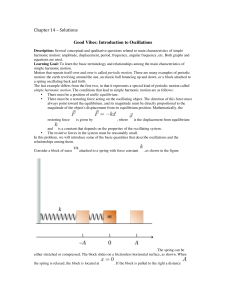Chapter 12 – Vibrations and Waves 12-1 Simple Harmonic Motion
advertisement

Chapter 12 – Vibrations and Waves 12-1 Simple Harmonic Motion Definitions to Recall: Acceleration – the rate of change of velocity Velocity – the time it takes to change a position; need motion and direction (no the same as speed) At the equilibrium position, velocity reaches a maximum and acceleration becomes zero. Demonstration with blocks and springs I. Pulling Mass Away (Max Displacement) Explanation:_____________________________________________________________ ________________________________________________________________________ ________________________________________________________________________ Spring force is to the ___________________. Velocity is ______________________. Acceleration will ________________________. At maximum displacement, spring force and acceleration reach a maximum. Demonstration with blocks and springs II. Spring Is Unstretched (Equilibrium) Explanation:_____________________________________________________________ ________________________________________________________________________ ________________________________________________________________________ Spring force is to the ___________________. Velocity is ______________________. Acceleration will ________________________. III. Spring Is Compressed (Maximum Displacement) Explanation:_____________________________________________________________ ________________________________________________________________________ ________________________________________________________________________ Spring force is to the ___________________. Velocity is ______________________. Acceleration will ________________________. The spring force acting to the right causes the mass to change its direction, and the mass begins moving back toward the equilibrium position. Then, the entire process begins again, and the mass continues to oscillate back and forth over the same path. **In an ideal system, the mass-spring system would oscillate indefinitely but, friction comes into play.** In simple harmonic motion, restoring force is proportional to displacement. Restoring Force – spring force always pushes or pulls the mass back toward its equilibrium position. Simple Harmonic Motion – restoring force is directly proportional to the displacement of the mass. Robert Hooke found that most mass-spring systems obey a simple relationship between force and displacement. Hooke’s Law Felastic = - kx (spring force) = - (spring force X displacement) --A negative sign shows that the spring force will tend to move the object back to its equilibrium position. --k = spring constant What would a greater k mean in an experiment? ________________________________________________________________________ ________________________________________________________________________ Conceptual Challenge p.439





